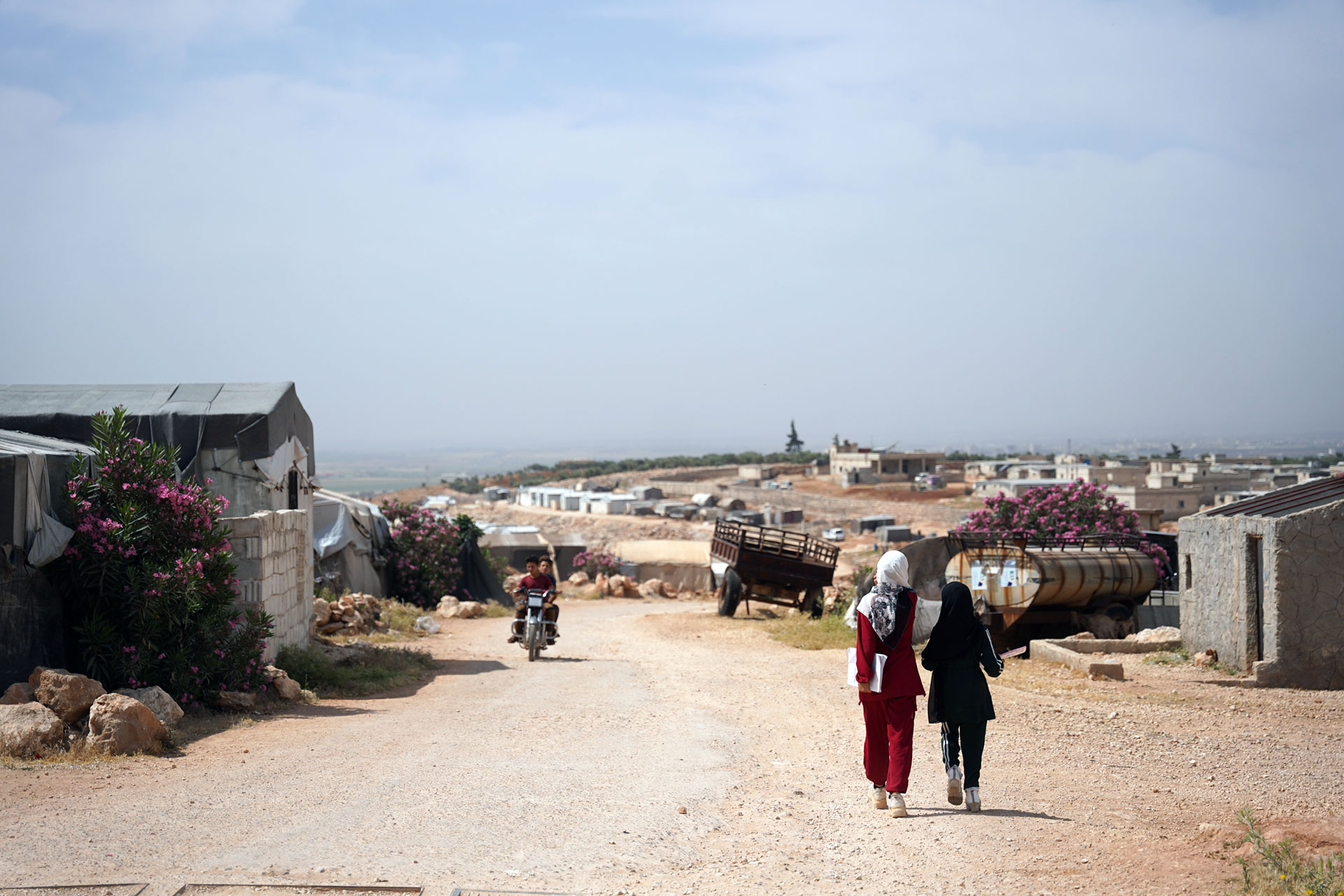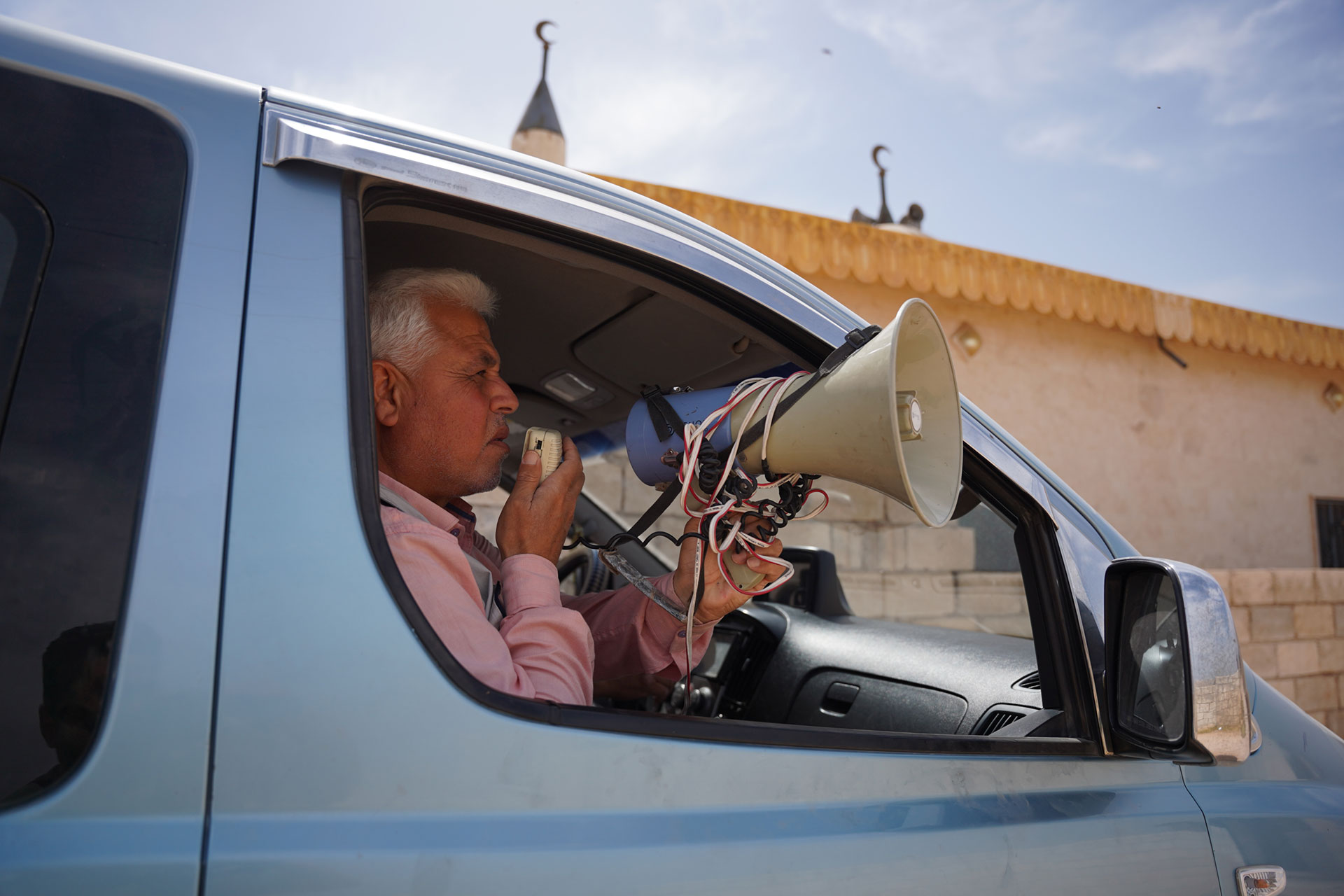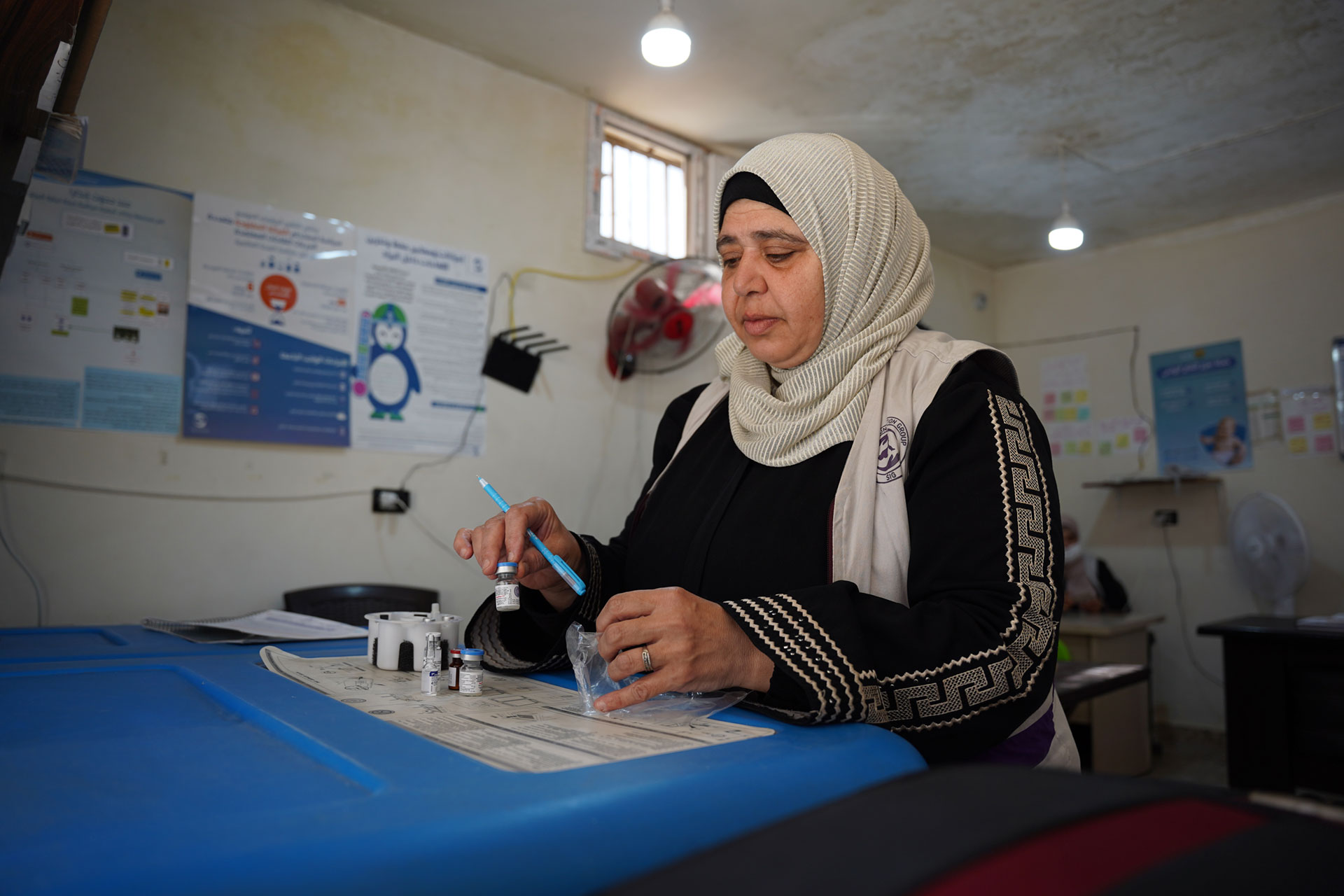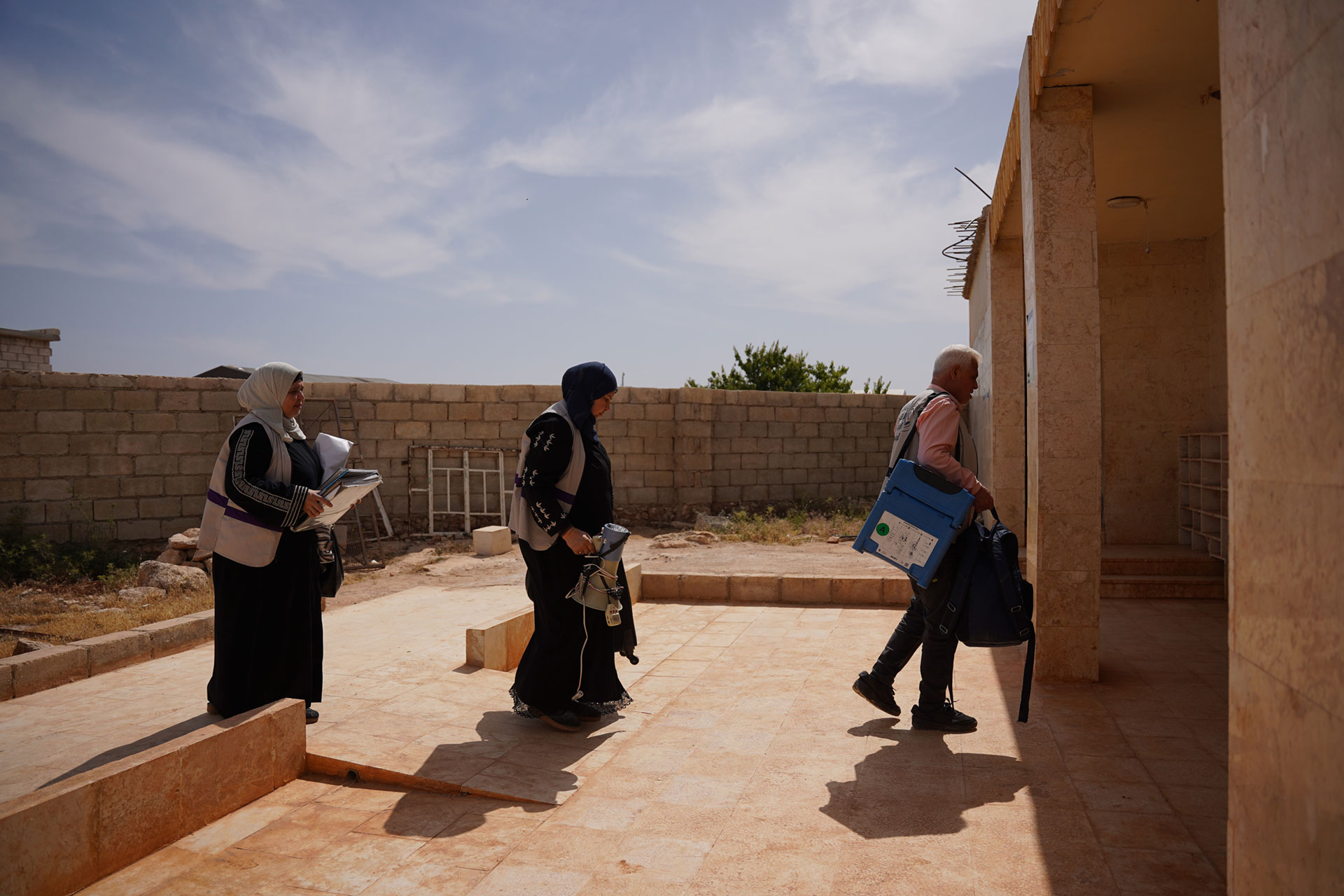 Two health workers walk through Al-Burj camp in Idlib, going tent to tent to ensure children are protected through routine vaccination. Photo: WHO
Two health workers walk through Al-Burj camp in Idlib, going tent to tent to ensure children are protected through routine vaccination. Photo: WHO
28 August 2025, Idlib, Syrian Arab Republic – Two women walk through Al-Burj camp in Idlib, one of many places where displaced families are trying to rebuild their lives. Despite the hardship, mobile vaccination teams move quietly from tent to tent, working to protect children’s health.
Against the uncertainty of displacement, a quiet force of hope arrives carrying coolers, knocking on doors, and reassuring anxious parents. These are the vaccination teams of Al-Sham Paediatric Speciality Hospital.
Amer, a vaccination supervisor, lifts a loudspeaker to announce the team’s arrival. “It’s not just about giving vaccines,” he says. “It’s about building trust, raising awareness, and making sure no child is left behind.”
 Amer announces the arrival of vaccination teams in Idlib. Photo: WHO
Amer announces the arrival of vaccination teams in Idlib. Photo: WHO
Amer oversees 2 teams – one based at the hospital and a mobile team covering the wide stretch between Batbu and Sarmada Hospital in Al Dana sub-district, Idlib. “Our work goes beyond giving vaccines,” he explains. “We remind families that a vaccine doesn’t just protect one child – it protects whole communities.”
In a small preparation room, each vial packed into cooler boxes is a promise of protection. Thanks to sustained support, Amer says the teams are now able to reach nearly every child, even in the most remote locations.
 A health worker prepares vaccines before heading out to reach displaced families in Idlib. Photo: WHO
A health worker prepares vaccines before heading out to reach displaced families in Idlib. Photo: WHO
“Our digital tracking system has been crucial. It allows us to follow up with families who missed appointments, and support those who lost their vaccine cards. We track each child’s doses to make sure no one is left behind.”
For many parents, trust was not immediate. “Some parents were afraid because of things they read online,” Amer recalls. “But with repeated visits and honest conversations, people came to understand. Now, they even call us if a dose is delayed. The community trusts us.”
 A mobile vaccination team arrives at a community in Idlib to immunise children. Photo: WHO
A mobile vaccination team arrives at a community in Idlib to immunise children. Photo: WHO
That trust is echoed by Jameel, a father of 15 who fled Homs with his family in 2015. “Some of my children missed their vaccines while we were on the move,” he says. “But once we settled in this camp, the team made sure they were all protected. I tell every parent; this is your child’s right.”
Inside their makeshift shelters, children receive drops of oral vaccine. Calmly, Jameel’s son rests on his lap as the health worker leans in to immunize him.
 Jameel, displaced from Homs and now living in Idlib, holds his son after ensuring all his children received their vaccines. Photo: WHO
Jameel, displaced from Homs and now living in Idlib, holds his son after ensuring all his children received their vaccines. Photo: WHO
These services are part of a joint effort involving the Ministry of Health, UNICEF, WHO and health partners, with support from Gavi, the Vaccine Alliance, and the Gates Foundation. In Idlib and Aleppo, more than 80 immunization centres and outreach teams are operating with this collective support. As Syria enters a new phase of recovery, these locally led efforts mark an important step towards a more integrated and nationally supported health system.
Amer closes with a message of optimism. “Every child we reach, every dose we give, is a step towards a healthier future. Continued support doesn’t just sustain a programme – it protects childhood itself.”
 A health worker administers oral vaccine drops to Jameel’s child inside his family's temporary shelter. Photo: WHO
A health worker administers oral vaccine drops to Jameel’s child inside his family's temporary shelter. Photo: WHO
*names changed




